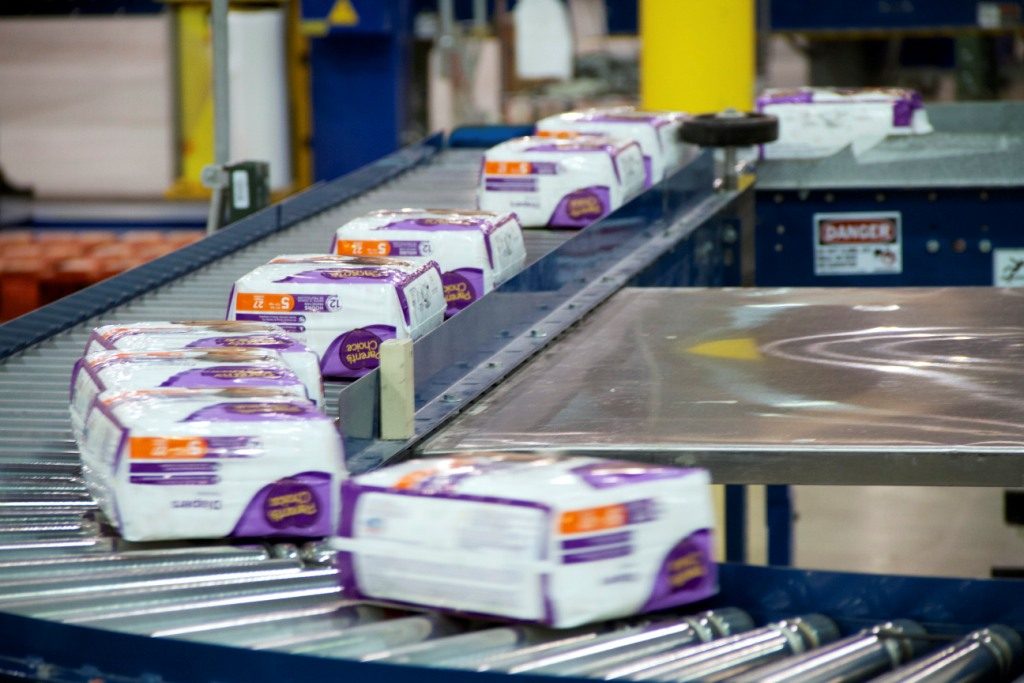
Features
Financial Reports & Markets
Fluff pulp forecast to achieve 3.6 per cent growth
January 20, 2016 By Cindy Macdonald
 Domtar Personal Care produces private label diapers in North America.
Domtar Personal Care produces private label diapers in North America. Large hygiene markets and fast growing nonwovens will drive global growth for fluff pulp, according to a new report from Smithers Pira, The Future of Fluff Pulp to 2020.
Global demand for fluff pulp was 5.4 million air dried tonnes (ADMT) in 2015, up from 4.7 million ADMT in 2010. Projected demand in 2020 is 6.5 million ADMT for a projected annual growth of 3.6 per cent by 2020.
Historically, fluff pulp has been a specialty pulp grade with higher prices and margins than the more common papermaking pulp grades. Accounting for about 10 per cent of the total pulp market globally in 2015, fluff pulp has apparently avoided regular price fluctuations of pulp with only minor variations over the last five years, according to Smithers Pira.
“Fluff pulp is a very desirable pulp product, with production costs lower than for dissolving pulp, and prices higher than for papermaking grades,” said Phillip Mango, author of the report.
“The outlook for fluff pulp pricing is that it will not vary as much as it has in the past and list price will stay high while actual discounted prices slowly drop from 2015 through 2020. This will make fluff pulp even more attractive versus other fibres.”
Despite continuing reduction in fluff pulp content in its major end uses, fluff pulp has proven amazingly resilient, gaining volume in adult incontinence and increasing baby diaper sales in emerging markets, notes the report.
The large hygiene end-uses consume the majority of global fluff pulp and drive the growth of the fluff pulp market. The fastest growing major end-use for fluff pulp is nonwovens. These hygiene end-uses are projected to increase fluff consumption in air dried tonnes by 3.4 per cent annually through 2020, while nonwovens are projected to increase their fluff pulp consumption by 5.4 per cent.
The competitive landscape for fluff pulp is dominated by large pulp and paper companies located in North America, thanks to the optimal growing conditions in this region. The four largest fluff pulp producers are Georgia-Pacific, Weyerhaeuser, International Paper, and Domtar. These four account for about 80 per cent of all fluff pulp production in 2015. The 10 largest producers account for about 99 per cent of global fluff pulp production. Of the top 10 producers, six are in North America, one in South America and three in Western Europe.
The trend in fluff pulp production is expansion in South America and North America, while Europe has concentrated on modifying pure fluff producing mills to biorefineries.
Geographically, consumption is driven by the large hygiene end-uses plus the growing nonwovens markets.
Here, Asia is the market leader, with Western Europe and North America second and third respectively. The North American and Western European markets are relatively mature and as such have the lowest growth for fluff pulp, while Asia, South America and Eastern Europe all have higher growth rates.
With comprehensive market data and industry analysis based on new primary research, The Future of Fluff Pulp to 2020 examines the changing nature of the global fluff pulp market over the next five years.
Print this page